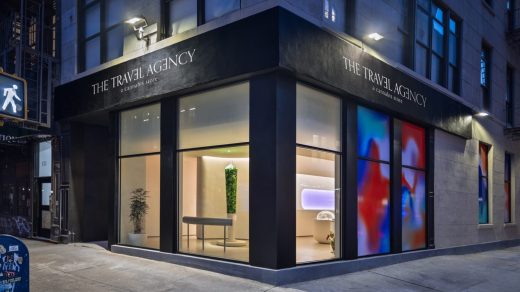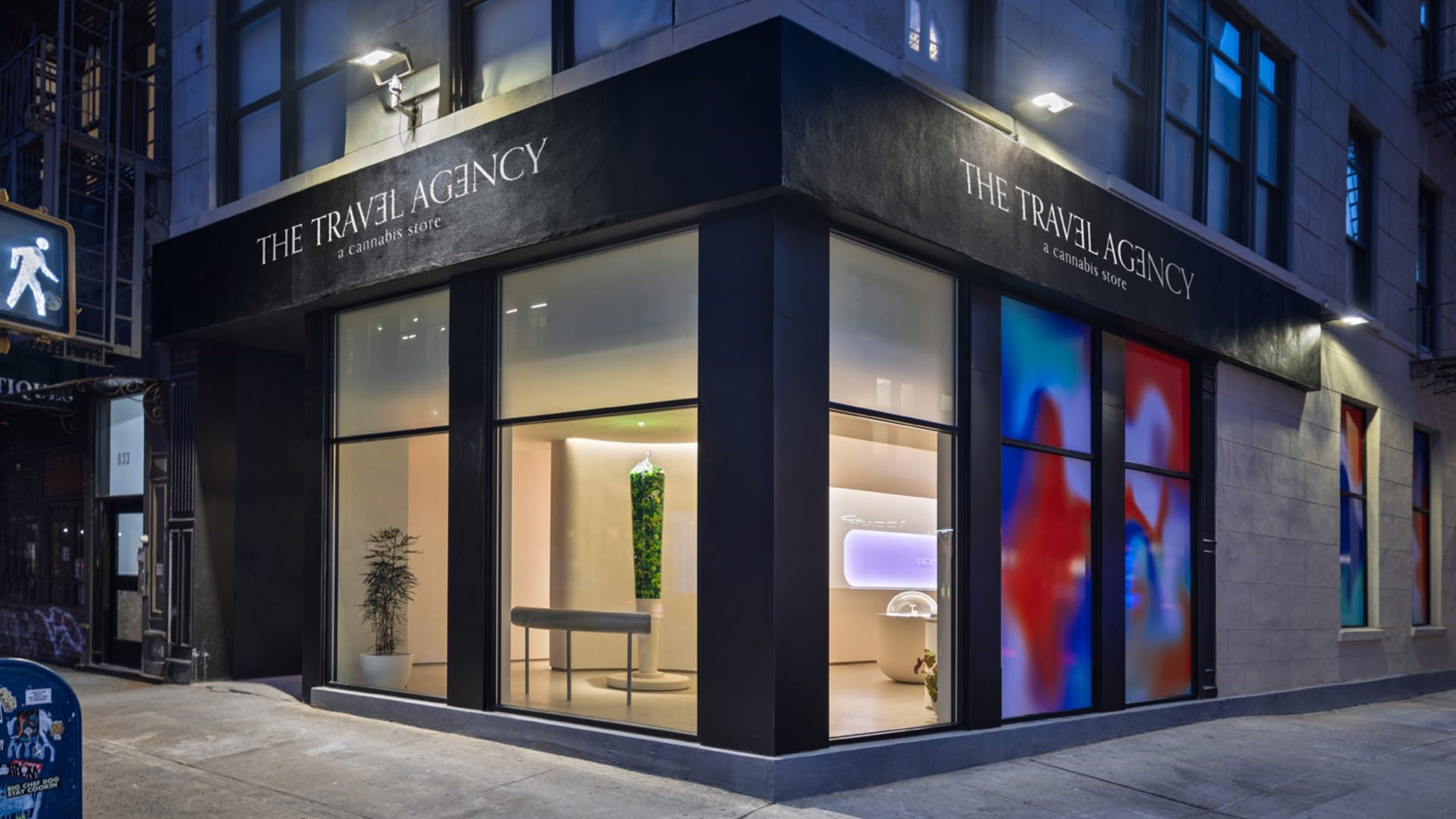New York City’s new luxury cannabis stores are works of high-art
June 24, 2024
New York City’s new luxury cannabis stores are works of high art
Illegal, slapdash dispensaries have taken over the city. Now, a new breed of high-design shop is looking to change the way people buy cannabis.
BY Diana Budds
If it wasn’t for the six-foot-tall sculpture of an immaculately rolled joint in the foyer of the Union Square outpost of Travel Agency, you might not know that you’re entering a cannabis store. The space, designed by the architecture firm Leong Leong, belongs in the same family as New York City’s retail temples—the Khaites, Kiths, and Aesops of the world that demonstrate how good retail is about a lot more than a transaction. With its egg-shaped Space Age sign hanging from the contoured ceiling, soft lighting, and long white counter, it’s like Saarinen’s TWA terminal meets a James Turrell sculpture.
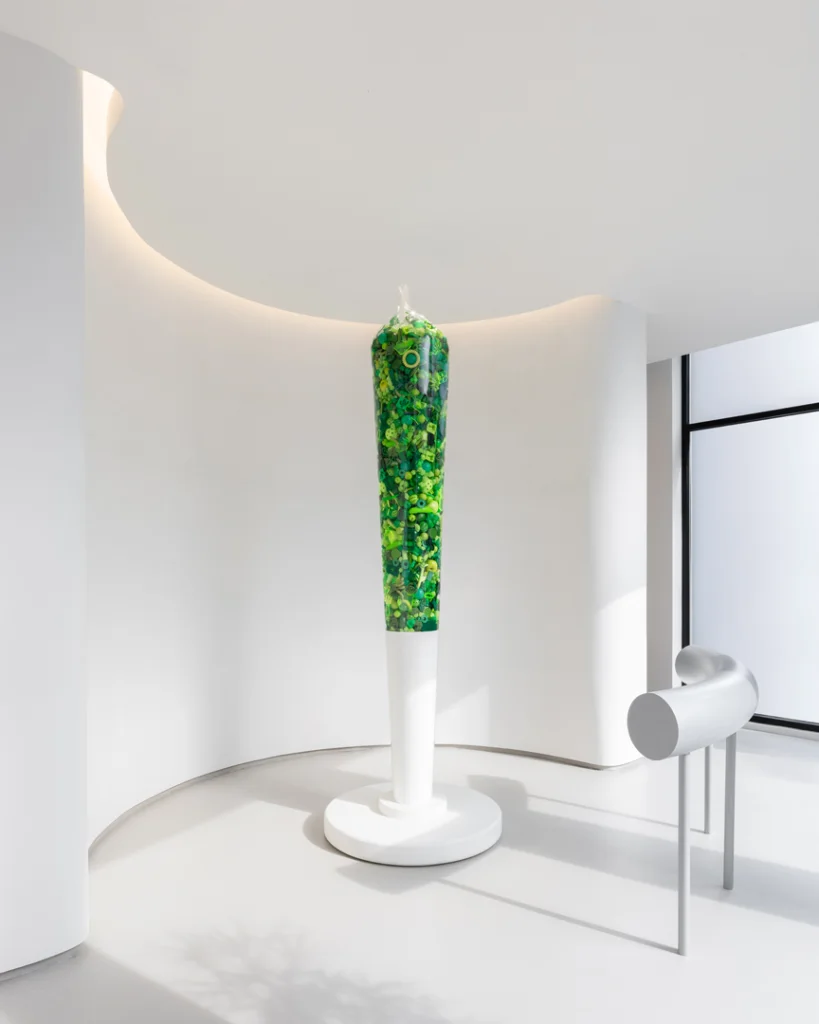
Travel Agency is one of the few actually stylish licensed dispensaries in New York City. Since opening in February 2023, the brand—which is a partnership between founders Arana Hankin-Biggers and Paul Yau and the Doe Fund—has expanded to three locations this year. Each of them is minimalist and has a subtle travel theme. The second, on a prime block of Fifth Avenue, was based on a European train hall and features dove gray limewash walls and a silver palm tree in the window; the third, in Downtown Brooklyn, has the vaulted ceilings and white tile found throughout the city’s subway stations. “The big idea is how do you create a sanctuary or a portal to a new destination,” says Christopher Leong, the architect who led the store designs.
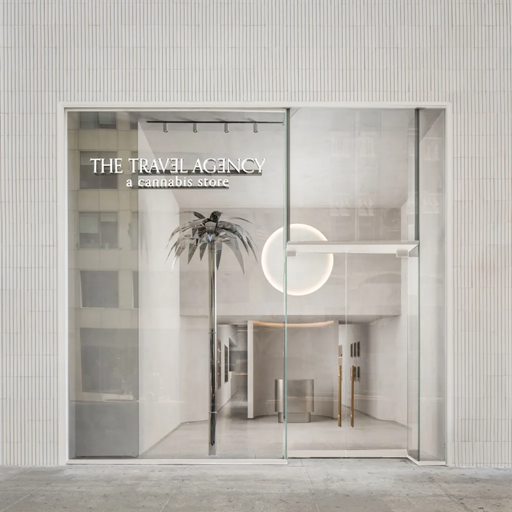
When New York State announced the legalization of recreational cannabis in March 2021, entrepreneurs—especially ones that didn’t bother to apply for licenses—quickly opened for business. In New York City, this first took the form of Shamrock-green Uncle Budd and cartoon-wrapped Weed World trucks parked on street corners across the five boroughs. Soon, weed bodegas done up by graffiti artists became a kind of local vernacular, with stoned Adult Swim characters acting as visual shorthand for the products sold inside.
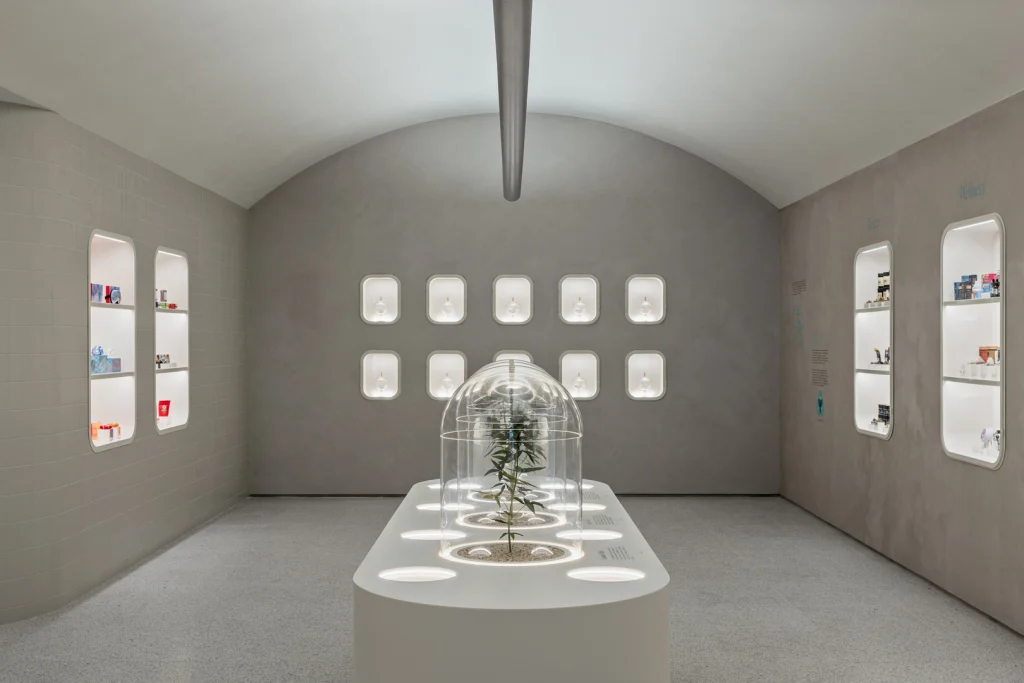
Slowly, licensed dispensaries have come online. But a year and a half since the first one opened, the retail landscape for legal weed has been uneven, sluggish, and underwhelming. To date, there are only 132 licensed cannabis stores across New York State, around 60 of which are in New York City. Most dispensaries, licensed or not, have about as much charm as Metro PCS store.
Some critics have said the state botched the rollout, citing unfulfilled social equity promises to deliver turnkey shops to license holders with marijuana convictions and a failure to enforce the booming illicit market. Business is fiercely competitive and some license holders are turning to high design to stand out.
To Hankin-Biggers, who has a background in real estate development, design is a big reason why her brand has been able to grow so quickly. “Because of the 3,000 illicit shops, we really wanted to stand out in a meaningful way,” she says. “There’s a lot of product out there, so why would you go to Travel Agency? We thought, why not make a dispensary fun and sexy and interesting. It’s not too stuffy—elevated but not elitist.”
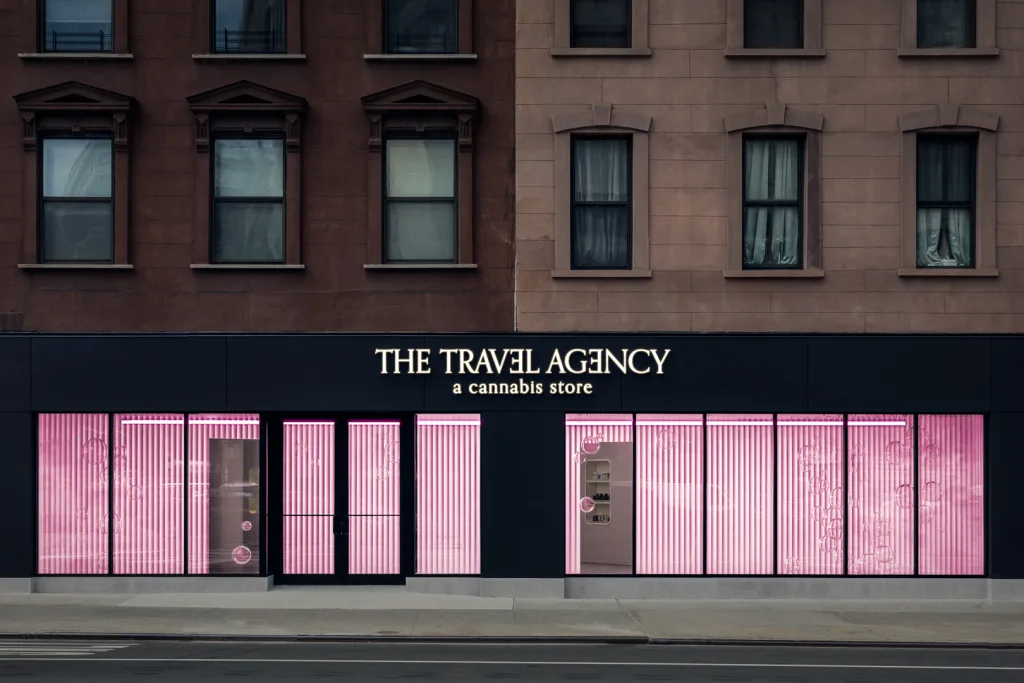
What dispensaries can and can’t do
Because of the state’s restrictions on cannabis retail and marketing, there are quite a few design constraints on dispensaries. Among them: cannabis products can’t be visible from the street; storefront signage can only say the shop’s name and that it’s a dispensary; no neon colors, bubble fonts, and all products containing marijuana have to be locked from customers. There can’t be anything sold that imitates food or candy. Meanwhile, dispensary names and concepts can’t riff on drug stores, apothecaries, doctor’s offices, or anything that would be appealing to someone under 21.
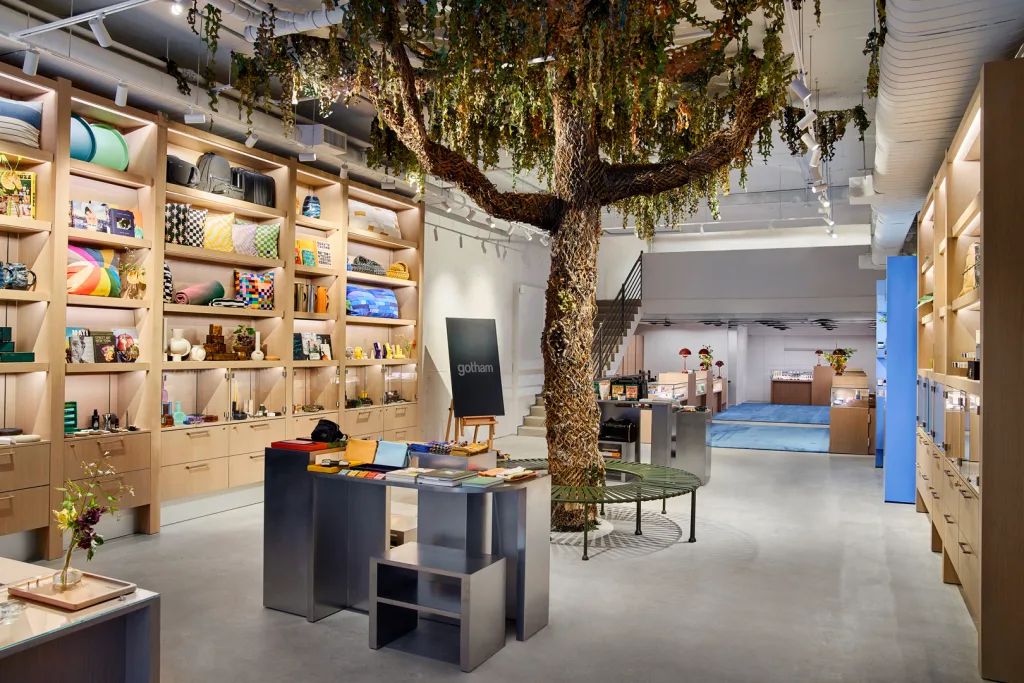
Travel Agency’s spaces are thought of as experiential, multisensory art installations. The sculptures in the foyers, which change periodically, solve the problem of having no cannabis visible from the street while still having a welcoming storefront. (Plus they’re a nice place to wait for your ID to be checked, another requirement for dispensaries.) There’s a fragrance wall in the back that lets curious shoppers smell the natural essential oils in cannabis and realistic-looking paper sculptures of plants held in two-foot-tall, bell-jar-like vitrines.
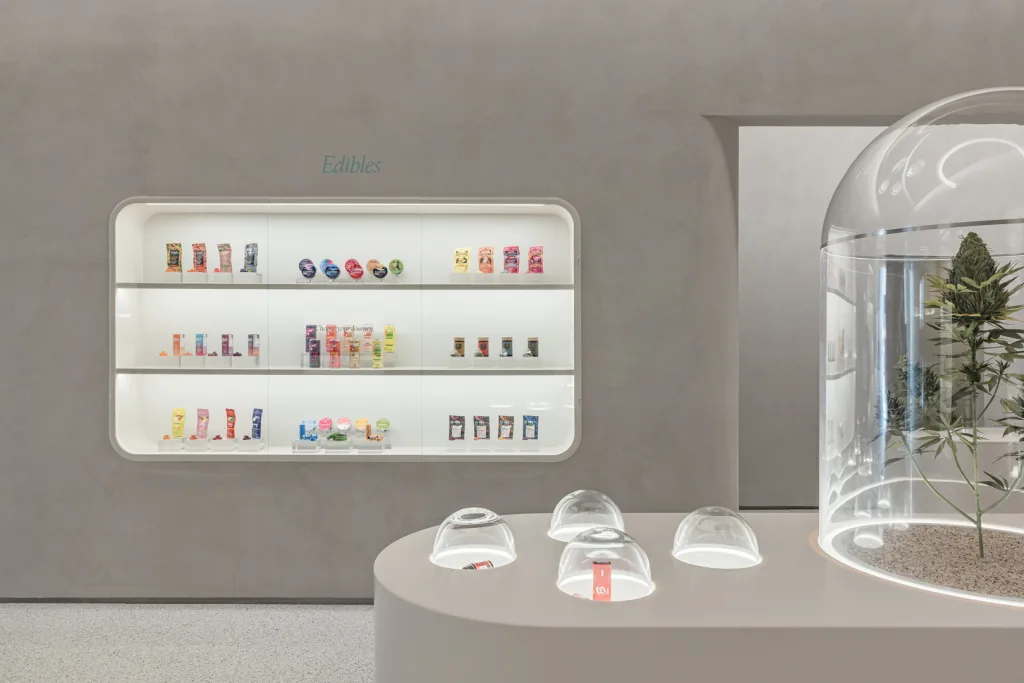
Leong Leong designed cases that feel almost like jewelry store displays to meet the lock-and-key rules while also making the products, which are all small, appear elegant. “All these security measures became design devices we embraced,” Leong says. The color palette is muted because the packaging—Travel Agency carries 350 products from 60 to 70 brands—is visually cacophonous.
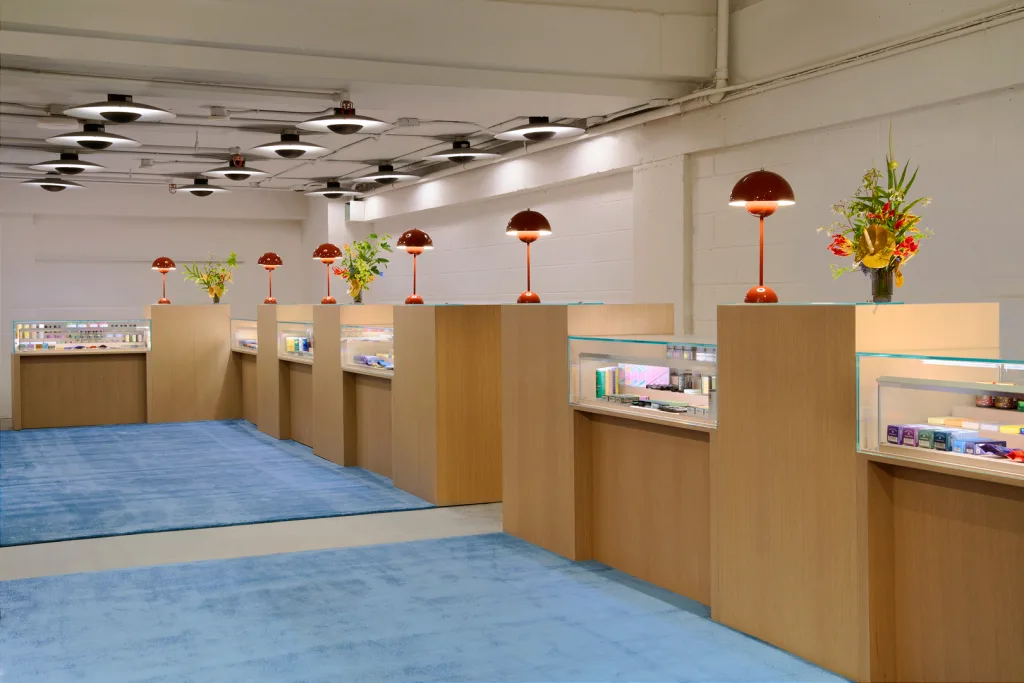
“It’s almost more like a museum than a shoppable retail store,” says Hannah Frossard, a senior designer at Leong Leong, (Incidentally, the architecture firm was designing the Metropolitan Museum of Art Costume Institute’s Sleeping Beauties exhibition at the same time as Travel Agency and there are aesthetic and functional similarities between them.) Frossard notes that there is very high foot traffic during peak hours, like a museum, and designing for quick trips was another challenge. Customers can peruse the shelves and chat with budtenders about the products on view, but they make their purchases on one of a dozen iPads throughout the stores, then head to a counter to pick up what they bought. In that way, the space also had to function like a fast casual restaurant, Frossard adds.
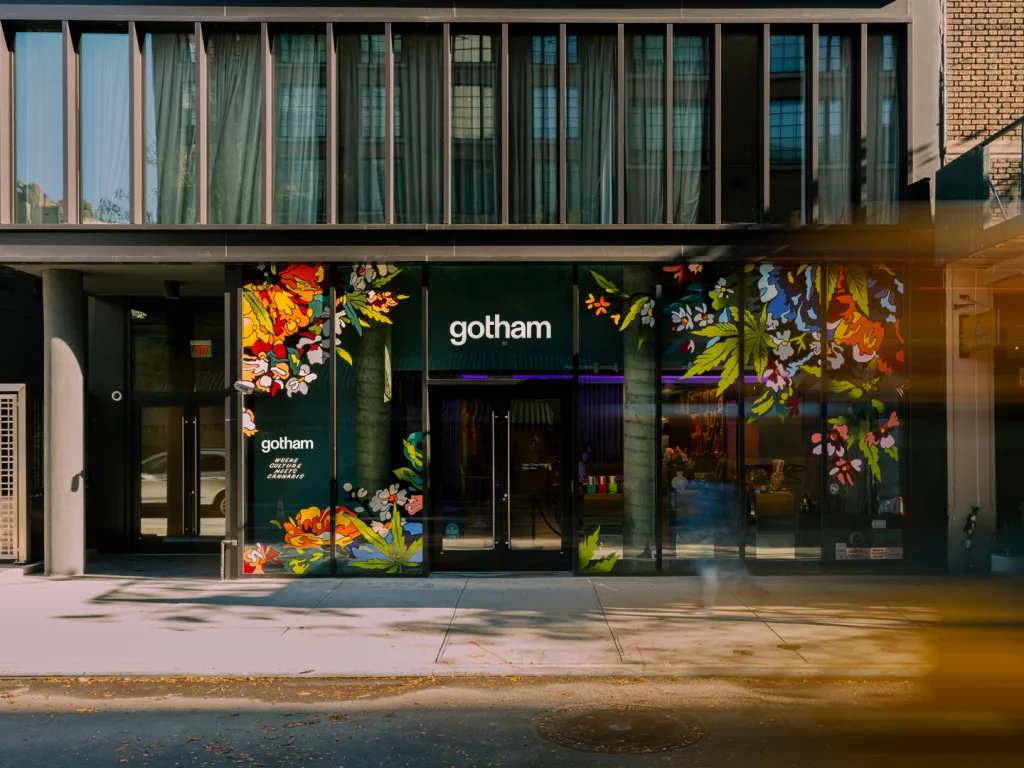
The rise of the high-end cannabis store
Gotham, a licensed retailer that opened in the East Village in May 2023, is another high-end shop that went the conceptual route. Geraldine Hessler, the vice president of marketing at Gotham, describes the space as “accessible luxury.” The warm, modern shop is informed by New York City’s art, fashion, and culture scenes. It sells home goods in the area up front, has a gallery upstairs, and keeps its products in custom-designed cases that also resemble what you’d find in jewelry stores. “We did not want a sterile space that felt transactional, so we created a space that invited people to linger, ask questions, and learn,” Hessler says. “Customers often say they want to live in Gotham because they feel at home and we could not ask for a better compliment.”
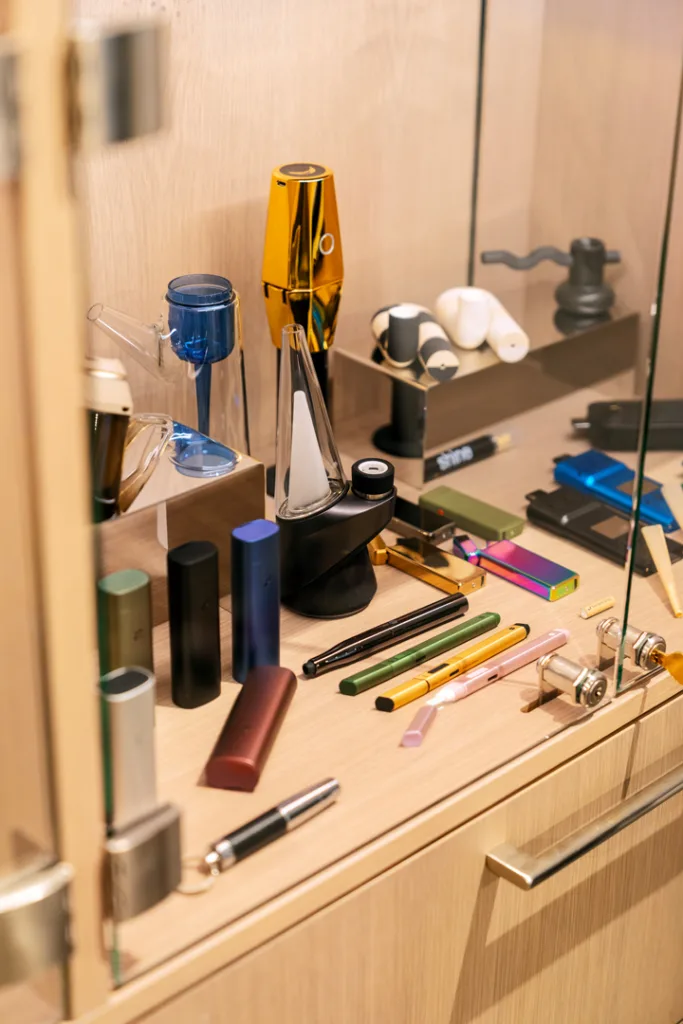
Because it’s still early days in legal weed, dispensaries who have the budgets for architects are trying to appeal to as many customers as possible through lifestyle boutique approaches. But a high-concept space isn’t synonymous with a good customer experience, particularly for people who are more experienced, says Aaron Ghitelman, a former deputy communications director for the New York State Office of Cannabis Management.
He visited one of them (and declined to say which) but noted that the music from an event happening inside was so loud that he left before buying anything. “It’s like, okay, so you have this more-than-a-million-dollar build-out that I’m sure you put a lot of thought into, but I never went back into that store,” Ghitelman says. “I want to be able to have conversations with budtenders and other customers, and I want to be able to get in and out.”
Of the conceptual spaces Ghitelman has visited he notes that Dagmar, a dispensary in SoHo with a goth Art Deco vibe, “went for it in a way that doesn’t take away from the cannabis purchasing experience,” he says. But the dispensary he likes the most is Terp Bros, a small, no-fuss shop on Ditmars Avenue in Astoria with a lot of products. “They figured out what a neighborhood dispensary, not a flagship, looks like,” Ghitelman says.
In places where recreational use has been legal for a while—like California, Colorado, and Canada—there’s a wealth of ambitious retail. In a few years, perhaps New York might be among them. “It’s an exciting time and I think folks are figuring out what works and what doesn’t work,” Ghitelman says. “I think we will see more maturation—and hopefully not homogenization—of aesthetics.”
ABOUT THE AUTHOR
(12)

